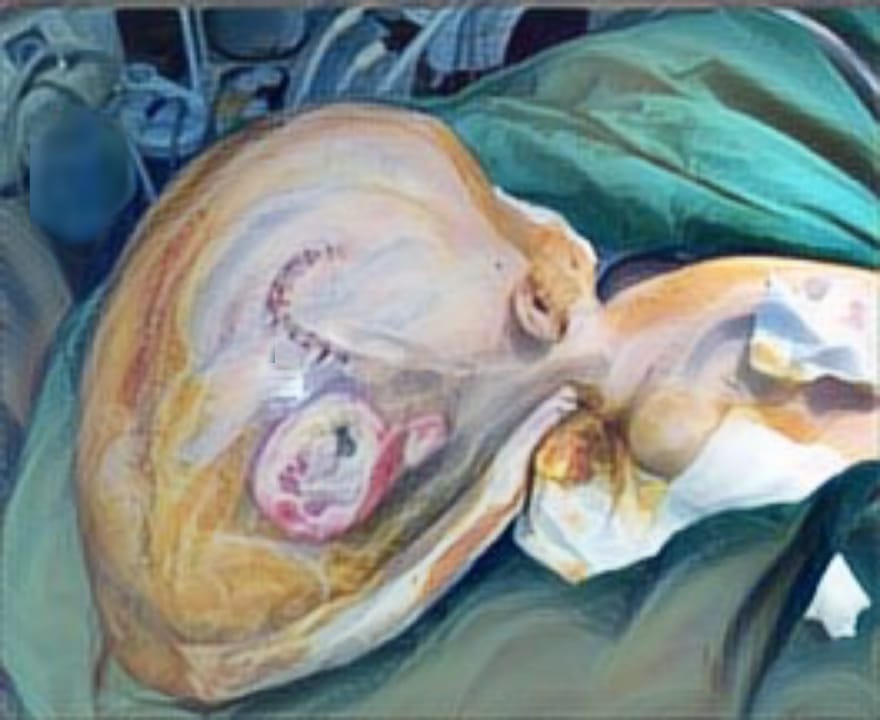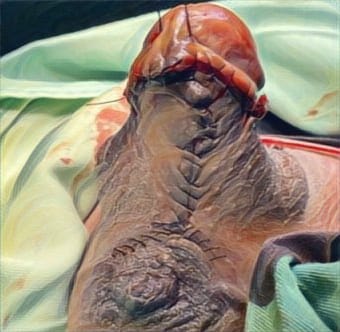Patient Consent for Publication
Publication Ethics and Malpractice Statement
Jurnal Rekonstruksi dan Estetik (JRE) is a journal that aims to be a leading peer-reviewed platform and an authoritative source of information. We publish an original article, literature review, case reports, systematic review, and meta-analysis with a focus on burn and wound, hand surgery, microsurgery, oncoplastic, craniofacial, external genitalia reconstruction, and aesthetics that has neither been published elsewhere in any language nor is it under review for publication anywhere. The following statement clarifies the ethical behavior of all parties involved in the act of publishing an article in this journal, including the author, the editor, the reviewer, and the publisher (Faculty of Medicine, Universitas Airlangga). Publication ethics in this journal is based on the Committee on Publication Ethics (COPE) and the World Association of Medical Editors (WAME). This journal applies open citations as indicated in the Initiative for Open Citations (I4OC)
Duties of Authors
1. Reporting Standards
Authors should present an accurate account of the original research performed as well as an objective discussion of its significance. Researchers should present their results honestly and without fabrication, falsification, or inappropriate data manipulation. A manuscript should contain sufficient detail and references to permit others to replicate the work. Fraudulent or knowingly inaccurate statements constitute unethical behavior and are unacceptable. Manuscripts should follow the submission guidelines of the journal.
2. Originality and Plagiarism
Authors must ensure that they have written entirely original work. The manuscript should not be submitted concurrently to more than one publication unless the editors have agreed to co-publication. Relevant previous work and publications, both by other researchers and the authors' own, should be properly acknowledged and referenced. The primary literature should be cited where possible. Original wording taken directly from publications by other researchers should appear in quotation marks with the appropriate citations.
3. Multiple, Redundant, or Concurrent Publications
The author should not in general submit the same manuscript to more than one journal concurrently. It is also expected that the author will not publish redundant manuscripts or manuscripts describing the same research in more than one journal. Submitting the same manuscript to more than one journal concurrently constitutes unethical publishing behavior and is unacceptable. Multiple publications arising from a single research project should be clearly identified as such and the primary publication should be referenced
4. Acknowledgement of Sources
Authors should acknowledge all sources of data used in the research and cite publications that have been influential in determining the nature of the reported work. Proper acknowledgment of the work of others must always be given.
5. Authorship of the Paper
The authorship of research publications should accurately reflect individuals' contributions to the work and its reporting. Authorship should be limited to those who have contributed significantly to the conception, design, execution, or interpretation of the reported study. Others who have made significant contributions must be listed as co-authors. In cases where major contributors are listed as authors while those who made less substantial or purely technical contributions to the research or publication are listed in an acknowledgment section. Authors also ensure that all the authors have seen and agreed to the submitted version of the manuscript and their inclusion of names as co-authors.
6. Disclosure and Conflicts of Interest
All authors must disclose any financial or non-financial conflicts of interest that could influence the manuscript, including financial support, employment, consultancy, honoraria, ownership of stocks, patents, or grants; this statement must be included in the Author Declaration Form and the main manuscript. If undisclosed conflicts are discovered after publication, the journal may issue a correction, expression of concern, or retract the article.
7. Fundamental Errors in Published Works
If the author discovers a significant error or inaccuracy in the submitted manuscript, then the author should promptly notify the journal editor or publisher and cooperate with the editor to retract or correct the paper.
8. Hazards and Human or Animal Subjects
The study being presented should have been ethical, responsible, and in accordance with all applicable laws. If the study contains any chemicals, processes, or equipment with any unusual hazards built into their use, the author should make that evident in the paper. The Declaration of Helsinki for Human experimentation must be followed in all activities. Animal research should be carried out with the same rigor as human research. The ARRIVE checklist and the Replacement, Reduction, and Refinement (3Rs) principles for animal subjects must be followed in the author's study that uses animal models. Journals require authors to include specific information on study design, statistical analysis, experimental methods, use of experimental animals, housing, and husbandry.
9. Fundamental Errors in Published Works
If an author finds a substantial error or inaccuracy in the article they have submitted, they should contact the journal editor or publisher right away and work with them to rectify the study or retract it. The contact for the journal is jre@journal.unair.ac.id.
10. Registration of Clinical Research
There is a requirement for clinical trial registration in a public register. Before or at the time of participant enrollment, a trial must be registered. This policy is in concert with that of the ICMJE.
11. Data Access and Retention
Authors should be prepared to make the raw data from their study publicly available if possible and may be asked to submit it with the publication for editorial review together with the study's raw data.
12. Subject Consent Forms
There should be informed consent obtained before violating a subject's right to privacy. However, subject data should never be changed or fabricated in an effort to achieve anonymity. Identifying details (written or photographic) should be left out if they are not necessary. A consent form should be sought if there is any uncertainty because complete anonymity is challenging to accomplish. An inadequate method of protecting anonymity is, for instance, to cover the subject's eyes in photographs. A statement to that effect should be made in the article once informed consent has been received.
13. Ethics Committee Approval
The research must have been carried out in accordance with the following principles and all applicable local laws, according to a declaration that must be signed by the authors. The Editors maintain the right to choose whether or not experiments involving the use of humans or animals should be accepted for publication in the journal.
14. The Use of Generative AI and AI-Assisted Technologies
Authors are allowed to use AI to enhance the language and readability of manuscripts, provided there is adequate human oversight. Authors must meticulously review and edit AI-generated content due to potential inaccuracies or biases inherent in AI outputs. Disclosure of AI usage must be made in the manuscript, with this statement appearing in the published work to ensure transparency. AI should not be listed or cited as an author. Human authorship entails responsibility for ensuring originality and compliance with third-party rights. For more information, please click Elsevier publication ethic and Generative AI policies for journals, COPE, and WAME.
15. The Use of AI in Figures, Images, and Artwork
AI must not be used to create or modify images within manuscripts, except for adjustments that do not alter the original information. AI should not be used to generate artwork, including graphical abstracts. The use of AI for cover art may be permitted with prior approval from the journal editor, ensuring proper rights and content attribution. For more information, please click Elsevier publication ethic and Generative AI policies for journals, COPE, and WAME.
Duties of Editor
1. Publication Decisions
Based on the review report of the editorial board, the editor can accept, reject, or request modifications to the manuscript. The validation of the work in question and its importance to researchers and readers must always drive such decisions. The editors may be guided by the policies of the journal's editorial board and constrained by such legal requirements as shall then be in force regarding libel, copyright infringement, and plagiarism. The editors may confer with other editors or reviewers in making this decision. Editors have to take responsibility for everything they publish and should have procedures and policies in place to ensure the quality of the material they publish and maintain the integrity of the published record.
2. Review of Manuscripts
The editor must ensure that each manuscript is initially evaluated by the editor for originality. The editor should organize and use peer review fairly and wisely. Editors should explain their peer review processes in the information for authors and also indicate which parts of the journal are peer-reviewed. Editors should use appropriate peer reviewers for papers that are considered for publication by selecting people with sufficient expertise and avoiding those with conflicts of interest.
3. Fair Play
The editor must ensure that each manuscript received by the journal is reviewed for its intellectual content without regard to the sex, gender, race, religion, citizenship, etc. of the authors. An important part of the responsibility to make fair and unbiased decisions is upholding the principle of editorial independence and integrity. Editors are in a powerful position by making decisions on publications, which makes it very important that this process is as fair and unbiased as possible.
4. Confidentiality
The editor must ensure that information regarding manuscripts submitted by the authors is kept confidential. Editors should critically assess any potential breaches of data protection and patient confidentiality. This includes requiring properly informed consent for the actual research presented, and consent for publication where applicable.
5. Disclosure and Conflicts of Interest
The editor of the Journal will not use unpublished materials disclosed in a submitted manuscript for his own research without the written consent of the author. Editors should not be involved in decisions about papers in which they have a conflict of interest.
6. The Use of Generative AI and AI-Assisted Technologies
Manuscripts and related communications must remain confidential. Editors must not upload manuscripts or communications to AI tools. Editorial assessments must be conducted by humans, as AI cannot replace the necessary critical evaluation. Editors are wholly responsible for the editorial process and final decisions. For more information, please click Elsevier publication ethic and Generative AI policies for journals, COPE, and WAME.
Duties of Reviewers
1. Confidentiality
Information regarding manuscripts submitted by authors should be kept confidential and be treated as privileged information. They must not be shown to or discussed with others except as authorized by the editor.
2. Acknowledgement of Sources
Reviewers must ensure that authors have acknowledged all sources of data used in the research. Reviewers should identify relevant published work that has not been cited by the authors. Any statement that an observation, derivation, or argument had been previously reported should be accompanied by the relevant citation. The reviewers should notify the journal immediately if they come across any irregularities, have concerns about ethical aspects of the work, are aware of substantial similarity between the manuscript and a concurrent submission to another journal or a published article, or suspect that misconduct may have occurred during either the research or the writing and submission of the manuscript; reviewers should, however, keep their concerns confidential and not personally investigate further unless the journal asks for further information or advice.
3. Standards of Objectivity
The review of submitted manuscripts must be done objectively and the reviewers should express their views clearly with supporting arguments. The reviewers should follow journals' instructions on the specific feedback that is required of them and, unless there are good reasons not to. The reviewers should be constructive in their reviews and provide feedback that will help the authors to improve their manuscript. The reviewer should make clear which suggested additional investigations are essential to support claims made in the manuscript under consideration and which will just strengthen or extend the work
4. Disclosure and Conflict of Interest
Privileged information or ideas obtained through peer review must be kept confidential and not used for personal advantage. Reviewers should not consider manuscripts in which they have conflicts of interest resulting from competitive, collaborative, or other relationships or connections with any of the authors, companies, or institutions connected to the papers. In the case of double-blind review, if they suspect the identity of the author(s) notify the journal if this knowledge raises any potential conflict of interest.
5. Promptness
The reviewers should respond in a reasonable time frame. The reviewers only agree to review a manuscript if they are fairly confident they can return a review within the proposed or mutually agreed time frame, informing the journal promptly if they require an extension. In the event that a reviewer feels it is not possible for him/her to complete a review of the manuscript within the stipulated time then this information must be communicated to the editor so that the manuscript could be sent to another reviewer.
6. The Use of Generative AI and AI-Assisted Technologies
Manuscripts must be treated as confidential. Reviewers must not upload manuscripts or any portion thereof to AI tools, including for review reports, as this could breach author confidentiality and data privacy. Peer review should be conducted by humans, as AI lacks the capacity for critical evaluation and may produce erroneous or biased conclusions. Reviewers bear full responsibility for their review reports. For more information, please click Elsevier publication ethic and Generative AI policies for journals, COPE, and WAME.
Screening for AI-Generated Articles
To identify potentially AI-generated manuscripts, the following checks are proposed:
1. Absence of prior publications by the author in reputable databases such as Google Scholar or PubMed, etc.
2. Lack of an official institutional affiliation by the author.
3. Manuscripts submitted spontaneously without prior contact or invitation.
This policy will be periodically reviewed and updated to reflect technological advancements and best practices, ensuring the integrity and ethical standards of the publishing process. We advise you to read our policy on the use of generative AI and AI-assisted technologies for Elsevier publication ethic and Generative AI policies for journals, COPE, and WAME.
ARTICLE WITHDRAWAL AND RETRACTION OF JURNAL REKONSTRUKSI DAN ESTETIK
Article Withdrawal
Authors are encouraged to consider their submissions carefully to ensure accuracy and compliance with publishing standards. Once a manuscript is submitted, withdrawals are only permitted before the review process begins. Pull requests made during or after the review process cannot be granted, as this has the potential to misuse editorial resources and reviewer efforts. Authors who insist on withdrawing their manuscript during peer review will have their names blacklisted for future submission to the journal. This step ensures accountability and upholds the integrity of the application process. This policy aims to maintain fairness and transparency in the publication process while adhering to journal standards, as well as ensuring that the resources invested by editors and reviewers are respected.
Article Retraction
The journal upholds values of excellence and morality in safeguarding the integrity of scholarly content. Changes to published articles are allowed under specific circumstances to comply with academic publishing norms and maintain the credibility of published work.
Infringements of professional and ethical codes, such as multiple submissions, bogus claims of authorship, plagiarism, or fraudulent use of data, may result in the retraction of an article. Retraction serves to inform the academic community about flawed results or misconduct and aims to correct errors in submission or publication following a thorough investigation by Jurnal Rekonstruksi dan Estetik. This process follows standards developed by scholarly bodies, emphasizing best practices in article retraction.
Retraction may occur in the following situations:
When an article is retracted, Jurnal Rekonstruksi dan Estetik will take the following actions:
Article Removal
Legal Considerations In rare cases, an article may be removed from the online database due to defamation, infringement of legal rights, anticipated legal actions, or severe health risks. In such instances, Jurnal Rekonstruksi dan Estetik will retain the metadata (Title and Authors) and replace the text with a screen indicating the article has been removed for legal reasons.
Article Replacement
If the original article poses a significant health risk, authors may choose to retract it and replace it with a corrected version. This process follows retraction procedures, with the retraction notice linking to the corrected, republished article and providing a history of the document.
Jurnal Rekonstruksi dan Estetik follows the retraction guidelines and withdrawal request provided by COPE (Committee on Publication Ethics).
COMPLAINT PROCEDURES
This procedure applies to complaints regarding the policies, procedures, or jounal sercive quality of the Jurnal Rekonstruksi dan Estetik editorial board. We value complaints as they offer opportunities for improvement, and we strive to respond promptly, courteously, and constructively. Complaints must concern issues within the responsibility of the Jurnal Rekonstruksi dan Estetik editorial board, such as content or process. The following procedure ensures fairness to both the complainants and those being complained about.
Journal History Focus and Scope Section Policies Publication EthicsArticle Processing Charge Peer Review Process Publication Frequency Open Access Statement Archiving Plagiarism Screening Repository Policy License Term ORCID ID Policy Copyright Notice Reference Manager Journal Sponsorship Withdrawal and Retraction Policy Complaint ProceduresOld Website Journal Contact







 Jurnal Rekonstruksi dan Estetik by Unair is licensed under a Creative Commons Attribution-ShareAlike 4.0 International License.
Jurnal Rekonstruksi dan Estetik by Unair is licensed under a Creative Commons Attribution-ShareAlike 4.0 International License.
